This Thursday, we will perform:
1. Warm up section: various exercise to improve general health.
2. Form of health Qigong: review form 1 and 2 of Tai Chi Quan 24 forms;
learn Form 3 (Brush left & right knees) and Form 4 (Play Pipa).
3. Rejuvenation: Damo Marrow-wash Gong (sitting exercise; a Yoga mat
needed).
4. self-healing/Good life kits: heel pain
Qigong contre le Coronavirus
Ancient Chinese Exercise (Qigong) for Coronavirus \ COVID-19
About Health Qigong
Health Qigong is a type of exercise which is based on traditional Chinese medicine and meridian theories and designed to improve people’s health and expand lifespan. The purpose of the class is to promote people’s health in the community via playing a good type of exercise together regularly.
The exercise can promote inner organs’ functions, mental relaxation and muscles and joints strengths through increasing body’s Qi’s (life energy) movement, Its characteristics are:
1) A combination of physical movement, breathing and mindfulness.
2) Visceral organs would get exercised following gentle physical movement, mind focus and deep breathing.
3) It is particularly suitable for people above middle-age due to its movements of being slow and gentle as well as health promotion – self treatment and prevention of diseases.
Health Qigong Class has opened since 8 Mar 2017. It runs on Thursday 530 – 630pm in Fishbourne Centre.
Health Qigong Class has opened since 8 Mar 2017. It runs on Thursday 530 – 630pm in Fishbourne Centre. Everyone is warmly welcome to join in.
The class is a rolling up rather than periodical one.
The fee for attending the class is £8 per session or £20 pay monthly.
Our class is a very lovely group. All our members are very friendly, helpful and closely to each other; and all our members are looking forward to meeting you at the class.
Please feel free to come to the class or email me for any questions.
Mawangdui Health Qigong (Mawangdui Daoyin Shu)
Origin, Development & Characteristics
Health Qigong · Mawangdui Daoyin Shu is one of the new exercises created and
compiled by Health Qigong Administration Center of General Administration of Sports of
China. Shanghai University of Sport (SUS) undertook the research task thereof.
The newly-compiled exercise is based on the Daoyin Tu (Daoyin Chart) unearthed from a Han dynasty tomb at the Mawangdui site, Changsha, Hunan Province, China.
It is mainly characterized by guiding qi and body movement along meridian channels and synchronising mind and body. The design for its exercise movements focuses on the opening and closing, ascending and descending, rotating and revolving, bending and stretching of the body, its tendons, and bones. It is a set of exercise method with primitive simplicity and elegant postures designed to cultivate one’s internal and external wellness. It integrates cultivating moral character, nourishing inner nature, entertainment and appreciation. It features elegant movements, smooth link-up, simplicity for easy learning, safety and reliability, so it is applicable for learning and practice by different groups of people, and it has the functions of curing diseases, strengthening body, prolonging life for promising longevity.
Characteristics of Mawangdui Daoyin Shu
(I) Conduction along meridians, and coordination of mind and body.
(II) Rotating, bending and stretching, and comfortable, slow, smooth and flexible manner
(III) Stretching the bones and tendons, and alternation of relaxation and contraction
(IV) Exhaling the old and inhaling the new, and unity of mind and body
Names of the Forms of Mawangdui Daoyin Exercise
Ma Wang Dui DaoYin Exercise
Movements
Preparation
Starting Stance
1. Drawing a Bow (挽弓)
2. Stretching the Back (引背)
3. Wild Duck Swimming (凫浴)
4. Dragon Flying (龙登)
5. Bird Spreading Its Wings (鸟伸)
6. Stretching the Abdomen (引腹)
7. Hawk Glaring (鸱视)
8. Stretching the Waist (引腰)
9. Wild Goose Flying (雁飞)
10.Crane Dancing (鹤舞)
11.Exhaling with Head Raised (仰呼)
12.Body Bending (折阴)
Ending Stance
Qigong for seniors – 5 tips for practice
The Physiology of Tai Chi and QiGong
练功十八法–前 Lian Gong Shi Ba Fa Part 1
Aim: To self-treat and prevent from problems of neck, shoulders, back, knees and ankles.
Exercise 1 (颈项争力): Turn neck
Exercise 2(左右开弓): Draw a bow on both sides
Exercise 3(双手伸展) : Stretch arms
Exercise 4(开阔胸怀): Expand chest
Exercise 5(展翅飞翔): Spread wings for flight
Exercise 6(鉄臂单提) : Raise single iron arm
Exercise 7(双手托天): Support sky with both hands
Exercise 8(转腰推掌): Turn trunk and push palm
Exercise 9(叉腰旋转): Circle lumber spine with arms akimbo
Exercise 10 (展臂弯腰): Stretch arms and bend trunk
Exercise 11 (弓步插掌): Take bow stance and thread palm
Exercise 12 (双手攀足): Press palms on feet
Exercise 13 (左右转膝): Circle knees
Exercise 14 (仆步转体): Take reverse bow stance and turn trunk
Exercise 15 (俯蹲伸腿): Bow, squat and stretch legs
Exercise 16 (扶膝托掌): Keep one palm on knee and hold up the other
Exercise 17 (胸前报膝): Hold knee in front of chest
Exercise 18 (雄关漫步): Walk forward and backward
Lian Gong Shi Ba Fa (LGSBF)
What is Lian Gong Shi Ba Fa? (Brief Introduction of Lian Gong Shi Ba Fa – Therapeutic and Health Care Exercises)
Dr Zhuang Yuan Ming, a famous doctor and professor of traumatology and orthopaedics, integrating several decades of clinical experience and what he has learnt from teaching and scientific research, and combining the soul of traditional martial, has created the medical health exercise – Lian Gong Shi Ba Fa (Eighteen-Method Exercise).
Eighteen-Method Exercise(Medical Health Exercise) has exerted obvious effects on the diseases such as the pain in the neck, shoulders, waist and legs etc. for its strong pertinence and scientificity. In addition, the Exercise is simple and easy to learn, so it is very popular among plenty of patients and exercise-fanciers. For this Eighteen-Method Exercise has been conferred the ‘Shanghai Scientific and Technological Achievement Award’ many times and also honoured as one of significant achievers in the field of Chinese Traditional Medicine Research of Shanghai since the establishment of our country. Eighteen-Method Exercise has been listed as one of the people’s gymnastic items to be popularized at home and abroad by the State Physical Culture and Sports Commission of China.
During the past over thirty decades, the Eighteen-Method Exercise has not just been popularized in various places of China. Along with the time past, its exercisers have covered all comers of the land. Domestic and overseas participants of this exercise are over ten millions, it was voted one of the Ten Shanghai people’s Favourites Sports Activities, 2003. Thereafter, Lian Gong Shi Ba Fa initially only accepted as a passive medical treatment, came to accepted as an active self-training program.
There are altogether three sets of Lian Gong Shi Ba Fa. Part 1 is exercises for prevention and treatment of pain in neck, shoulder, waist and legs; Part 2 is exercises for prevention and treatment of pain in joints of the extremities, tenosynovities, tennis elbow and internal organ disorder; Part 3 is exercises for prevention and treatment of the chronic bronchitis and the weakness of respiratory functions of middle-aged and old people.
Main characteristics related to the therapeutic and health care functions of Lian Gong Shi Ba Fa
1. Strong pertinent and comprehensive activities
2. Movements with emphasis laid on inner strength and the essentials given to obtaining the Qi
3. High-amplitude of action and extensive range of movements
4. Slow, synchronous, natural and harmonious movements
5. Training of movements together with natural breathing
6. Simple and easy to execute movements for prevention and curing of diseases
Important aspects of the method of practice of Lian Gong Shi Ba Fa
1. Be optimistic during the training
2. Keeping a tranquil mind and concentrating on the training
3. Emphasize on the correct movements during the training
4. Awareness of obtaining the Qi during the training
5. Necessary persistence in the training
6. Do the training progressively
Celebrate 2nd Anniversary of Fishbourne Health Qigong Class
Dear All,
Time has fled. With today’s class finished, our Qigong class has gone through its two-year’s journey (started 8 Mar 2017). From next class, on Thursday 7 Mar 2019, it will starts its first step of the third year. By the time of the 2nd anniversary of our Health Qigong Class, I have to say that the Class would not be able to survive today without all of your participations and supports. Therefore, I would like to give my great thanks to you all – the members who had ever joined the Class and our current members – Thank you very much for joining the Class and thank you very much for supporting me to keeping the Class.
I have a lots of thoughts when I reflect the two-year-experience.
Firstly, over the two years, there are total 30 people have ever joined the Class and 8 people have stayed and currently become our regular and honest members so far.
We have totally learned seven forms Health Qigong, they are Yi Jin JIng, Xi Sui gong, Liu Zi Jue, Tai Chi 24 forms, Da Wu, Rejuvenation Qigong and Li Gong Shi Ba Fa.
Over the two years, we have had three times gatherings with twice for Chinese New Year and once for Christmas celebrations. At the early stage of our class, one member joined me in Fishbourne Summer Fete and gave a demonstration of Health Qigong to the Public. Early this month, three of our members helped me hold a Chinese culture stand at Guildhall Portsmouth and demonstrated health Qigong to the public there. A couple of days later, three members discovered, visited and supported the Buddha temper near Midhurst (unfortunately I missed this activity due to being sick). Two members have managed to contact the local media and put our Class information on their magazine calenders. All these to me just like it happened yesterday. They have given me a lots of happy time to recall now and future.
Further more, I have learned a lot from you all over the time. I have always heard from you greeting and caring words or emails whenever I felt not well or in sickness. This has made me feel warm, cheerful and like be in a family. Particularly, you have shown your tolerance and containing towards my poor coaching and language skills. I have appreciated your kindness and supports to me. Thank you so much for this.
In short, since to promote our health is our common idea of gathering us here, let’s continue work together, help each other and perform more quality Qigong exercise in the new year.
Give my love and best wishes to you all,
Ping xxx
Lian Gong Shi Ba Fa Part 3 (Qi-enhance Exercise)
Exercise 1 Breathe naturally
Exercise 2 Breathe and exercise Qi
Exercise 3 Spread wings and inhale
Exercise 4 Squat and exhale
Exercise 5 Massage and harmonize Qi
Exercise 6 Massage face and warm Qi
Exercise 7 Rub neck and calm Qi
Exercise 8 Massage back of neck, ease Qi
Exercise 9 Pat chest and relax Qi
Exercise 10 Raise arms and expand Qi
Exercise 11 Expand chest and breathe smothly
Exercise 12 Look at palm and circulate Qi
Exercise 13 Lift arms up and down and flow Qi thoroughly
Exercise 14 Turn trunk and relax Qi
Exercise 15 Bend trunk backward and forward and nourish Qi
Exercise 16 Take reverse bow stance and strengthen Qi
Exercise 17 Exercise and enhance vital Qi
Exercise 18 Step with arms up and down and balance Qi
We had a Christmas Afternoon Tea party this evening. Thanks to Sue, Mary, Helen and Terri for their attending the party and bringing lovely foods and drinks in. We had a lovely social time then.
We also agreed to having another gathering session on 7 Feb 2019 at Chinese Royal Restaurant, Chichester, to celebrate Chinese New Year. Everyone and your family are welcome to join us then.
You can get the same health benefit from Tai Chi as from vigorous workout like Zumba.
https://www.bbc.co.uk/iplayer/episode/b0bnbjlc/trust-me-im-a-doctor-series-8-episode-6
Brief:
- Tai Chi is a type of gentle exercise but can produce meaningful physical changes
- Playing Tai Chi has positive effect on heart rate, blood (increase antioxidant) and blood vessels (increase elasticity of vessel).
Health Qi Gong Class has started to perform Dao Yin Rejuvenation Gong since Thursday 2 Aug. 2018
What is Dao Yin?
Daoyin is an ancient Chinese body-mind exercise originally aimed at health care as well as physical and spiritual purification. The ascetics of past time believed it could be used to obtain the “eternal youth” (changsheng bulao). The first historical reference about it appears in Zhuangzi, a Taoist text written between the 4th and 2nd century BC:

Breathing in and out, exhaling and inhaling, they get rid of the old to absorb the new. They swing like bears and stretch like birds – all this they do in order to have long life. They are Daoyin disciples, people who nourish their form seeking for longevity like Pengzu.
(Zhuangzi, Keyi)
Dao Yin Rejuvenation Gong including:
- Dao Yin to Rejuvenate Feet
- Dao Yin to Rejuvenating Back
- Dao Yin to Rejuvenating Abdomen Belly
- Dao Yin to Rejuvenate Hands, Arms and Shoulders
- Dao Yin to Rejuvenate Neck & Head
- Dao yin to Rejuvenate Face
- Dao Yin to Rejuvenate Nose
- Dao Yin to Rejuvenate Mouth
- Dao Yin to Rejuvenate Eyes
- Dao Yin to Rejuvenate Hair
- Dao Yin to Rejuvenate Ears
- Dao Yin to Rejuvenate Inner Organs
- Dao Yin to Rejuvenate Functioning of Sex
- Sitting Dao Yin Exercise for Rejuvenation
Da Wu for Health
The Da Wu based on simple dance movements of ancient times. It blends the method of Daoyin to open up and remove obstacles to the regulation of the vital energy and functions of the human body, improves the flow of qi (vital energy) and blood and enhances functions of the joints.
In the movements of the body, the bones serve as levers, the joints as fulcrums, and muscles contraction provides the motor force. Each joint is a mechanism, and it moves with the internal or external changes of the body.
The main purpose of the Da Wu was to relax the joints and relieve pain; that is, to soften the joints, regulate and improve the meridian system (main and collateral channels), and hasten the flow of qi and blood to the hips, knees, toes, shoulders, elbows, wrists, palms and fingers. At the same time, the Da Wu uses pulling, stretching, rotating, shaking and rubbing to relieve the joints, muscles and blood vessels and corresponding channels and to improve the circulation of qi and blood. Dance not only helps the muscles but also the internal organs to promote the circulation of qi and blood.
Characteristics
- Concentrating the Mind on the movements
- External Dancing and Internal Movement
- Flexible Movement of the Body and the Circulation of Qi
- Combining Firmness with Softness to Regulate the Flow of Qi
Names of the Movements (8 Movements/Forms)
Initial Stance
Form 1 Hold Head High and Chin Up (Ang Shou Shi)
Form 2 Open Hips (Kai Kua Shi)
Form 3 Extend Waist (Chen Yao Shi)
Form 4 Shake Body (Zhen Ti Shi)
Form 5 Rub Spine (Rou Ji Shi)
Form 6 Swing Hips (Bai Tun Shi)
Form 7 Massage Ribs (Mo Lei Shi)
Form 8 Flying Stance (Fei Tian Shi)
End Stance
See the video link @ Resource
- What is Tai Chi(ji)?
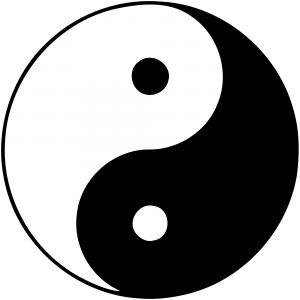
Tai means great; Chi (Ji) means end, pole.
Tai Chi is to clarify the universe from the Infinite to the tai Chi, as well as all things derived from.
Tai Chi, according to Daoim philosophy, indicates the most original and primitive state of the universe. Tai Chi generated the two instruments – Yin and Yang instruments.
Infinite that is, is more than the original Taiji more ultimate state. Infinite generates Tai Chi, Tai Chi moving generates yang; Motioning to the top then starts motionless; Still forms yin; Motion starts again while still to the end. Motion and still are of the root to each other and depend on each other. Tai Chi is the origin that all things of the universe were derived from.
- Tai Chi and Tai Chi Quan
The Health Benefits of Tai Chi: Art and Science
- Currently, we are practising Xi Sui Gong, Liu Zi Jue and Tai Chi 24 forms at our class. See Resource for the videos.
- Brief On Damo Xi Sui Gong
Master Damo, the ancester of 28th generation of Zhen, who created the Xi Sui Gong at Shaolin Temple, China, in 526AD after 9 years self-closed in a cave practising Zhen. Master Damo died when he was 202 years old.
Master Zi Jue used to suffered from several severe diseases six years ago – the mouth and bladder cancer made him skin fester; the diabetes led him sight-lost. He was at the edge of dying then. However, since he started to practise Xi Sui Gong 3 hours a day for a year, he has gotten rid off all of his health problems. Now he is now able to work 18 hours with only 3 hours sleeping a day.
He found that this set of qigong has strong function of preventing from disease and promoting recovery; The forms are easy to learn and practise; And as long as you keep practising it, you would find your health and longevity increased.
In order to help more people to increase their health and longevity, Master Zi Jue started to spread and teach the Damo Xi Sui Gong qigong.
Watch the Video of Si Sui Gong under the column of Resource
- Qi Gong & Tai Chi – Evidence Based Medicine
- Understanding QiGong and Qi 1/3
- Understanding QiGong and Qi 2/3
- Understanding QiGong and Qi 3/3
- Yang-Style Tai Chi 24-Form
Currently the class members start learning Tai Chi 24-Form.
Yesterday, some of our members joined me to attend the School & Church Fete at the Fishbourne Primary School Field, where we forming Yi Jing Jing Qigong in front of the audience successfully. Some audience showed their interests in Qigong and joining. Hopefully, through this demonstration, more and more people would understand Qigong and join our club.
Many thanks to June and Carol for organizing, presenting and performing the qigong with me in the public and many thanks to the unknown name lady who joined us in the demonstration as well.
Our Health Qi-gong class will move our time from Wednesday Morning 10 -11am to Thursday early evening 5:30 – 6:30 pm. Welcome to join us.
We are invited to give a demonstration of Yi Jin Jing Qi-gong on 17 June 2017 on the Fishbourne School & Church Summer Fete 2017. Thanks all the members who will join me for the demonstration and welcome everyone who are interested in Qi-gong or Tai Chi exercise to join us together then.
- Yi Jin Jing (Muscle and Tendon Changing Qi Gong) – Twelve Forms
To strengthen muscles and tendons’ strength and promote their functioning.
- Xi Sui Jing (Marrow-washing Qi Gong) – Twenty Movements
To promote brain, bone and marrows’ functioning; increase of memory and body constitution
- Six – Words Qigong (Six Healing Sounds Qigong)
Inner organs (Liver, Heart, Spleen, Lung, Kidney and Three Jiao) exercise Qi Gong; To promote important organs’ function and detoxify.
The Six Healing Sounds (also called Liuzijue, or 六字诀 in Chinese) is a breathing technique devised by the ancient Chinese to improve health and promote healing and longevity. The earliest record of the breathing technique is believed to appear during the Southern and Northern Dynasties written by Tao Hongjing (陶弘景), a well-known Traditional Chinese Medicine (TCM) doctor, Taoist, alchemist as well as astrologer who lived from AD 456 to 536. (Incidentally, he also played a crucial role in the discovery and identification of “Chinese snow” (potassium nitrate) by being the first person on record to describe the unique lilac-colored flame produced when the mineral is burned.)
Over the centuries, the Six Healing Sounds (SHS) went through a number of development and modification by various prominent TCM doctors, Taoists, monks and ascetics such as Sun Simiao (孙思邈), also known as China’s King of Medicine, and Zhiyi (智顗大师), the founder of the Tian Tai school of Buddhism. However, due to a lack of a standard way to transcribe the sound of Chinese characters in the past, much confusions about the pronunciation of some words arise. So the Chinese Administration of Sport of China decided to gather existing records of SHS, compare them and study the differences with the help of Chinese linguistics experts. In 2003, a revised version of SHS is released, and it is now promoted as a health-promoting Qigong practice (健身气功) in China. The SHS you see in this article is based on this version.
- How the Six Healing Sounds Work
In Traditional Chinese Medicine (TCM), the five major organs* — heart, liver, spleen, lung and kidney — are each assigned an element (fire, earth, metal, water or wood). Every organ also has an associated sound in which the organ resonates with. By using the associated sound, stale, congested qi can be expelled from the affected organ and be replaced with fresh, clear qi.
When qi gets congested or blocked due to inappropriate diet, poor lifestyle habits, repressed emotions and/or weak constitution, it becomes congested and turns into a cause of pain, discomfort or illness. Depending on where the qi gets stuck, symptoms vary. If it gets stuck in the spleen, the stale qi may manifest as bloating, abdominal pain, gas, and/or poor digestion. If it is in the liver, then it might be felt as pain in the lower right rib cage, quick temper, or liver/gallbladder dysfunction. If it gets trapped in the head, then it could lead to headache or illusion. According to TCM theories, badly congested qi can also lead to stagnated blood and blood clots.
The Six Healing Sounds practice helps to move congested qi and allow the body to get rid of it by creating different internal vibrations and pressures within different parts of the body through the inhaling and exhaling of air. In other words, when you make the six healing sounds, you are giving the internal organs a good massage to expel stale qi.
Xū (嘘)
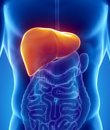 Sound: Xū (嘘)Associated Organ: LiverAssociated Element: WoodAssociated Season: Spring
Sound: Xū (嘘)Associated Organ: LiverAssociated Element: WoodAssociated Season: Spring
Hē (呵)
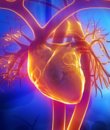 Sound: Hē (呵)Associated Organ: HeartAssociated Element: FireAssociated Season: Summer
Sound: Hē (呵)Associated Organ: HeartAssociated Element: FireAssociated Season: Summer-
Hū (呼)
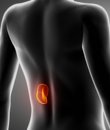 Sound: Hū (呼)Associated Organ: SpleenAssociated Element: EarthAssociated Season: All Seasons
Sound: Hū (呼)Associated Organ: SpleenAssociated Element: EarthAssociated Season: All Seasons
Sī (呬)
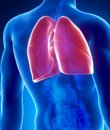 Sound: Sī (呬)Associated Organ: LungAssociated Element: MetalAssociated Season: Autumn
Sound: Sī (呬)Associated Organ: LungAssociated Element: MetalAssociated Season: Autumn- Chui – Word Qigong
Chuī (吹)
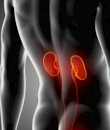 Sound: Chuī (吹)Associated Organ: KidneyAssociated Element: WaterAssociated Season: Winter
Sound: Chuī (吹)Associated Organ: KidneyAssociated Element: WaterAssociated Season: Winter
Xī (嘻)
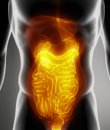 Sound: Xī (嘻)Associated Organ: Triple Energizer* / GallbladderAssociated Element: WoodAssociated Season: All Seasons
Sound: Xī (嘻)Associated Organ: Triple Energizer* / GallbladderAssociated Element: WoodAssociated Season: All Seasons
How to Use the Six Healing Sounds
There are several ways to use the Six Healing Sounds, and its usage largely depends on your current state of health:
- For health maintenance, practice the six healing sounds in the order as given above, that is: Xū (Wood) → Hē (Fire) → Hū (Earth) → Sī (Metal) → Chuī (Water) → Xī (Wood). This order is based on the mutual generation of the five elements (五行相生). Alternatively, if you are short of time, you can practice just the sound that is associated with the current season. For example, if it is winter, practice the sound, Chuī, to strengthen the kidney system. Note that the last sound, Xī, can be practiced all year round to support the triple energizer.
- To promote healing, practice the six healing sounds in the following order: Hē (Fire) → Sī (Metal) → Xū (Wood) → Hū (Earth) → Chuī (Water) → Xī (Wood). This order is based on the mutual overcoming of the five elements (五行相剋).Alternatively, if a specific part of your body requires special attention, you can practice only the healing sound associated with that organ. But as the organs referred to in TCM are not quite the same as the anatomical organs we are familiar with, you may need to consult a TCM practitioner to give you an accurate diagnosis of the organ(s) you should focus on.
Regardless of whether you are practising all six healing sounds or only one of them, always breathe in slowly through your nose and breathe out evenly from your mouth. Repeat each sound six times, and practice the sequence (be it one sound or six sounds) preferably three times a day.
- Background and History of Qi-gong
The history of qi-gong dates back to about 5000 years. There were many terms given to such kind of exercise before, like xing-qi (promoting the circulation of qi), fu-qi (taking qi), dao-yin (guiding the energy flow), tui-na (exhaling and inhaling), zuo-chan (sitting in meditation), yang-shen (nourishing the spirit) and jing-zuo (sitting still). It was not until 1953, when Liu Gui-zheng published a paper entitled “Practice On Qigong Therapy“, that the term qi-gong was adopted widely as a formal name for this type of exercise.
|
|
|
Manuscript drawing of physical exercises dao-yin (guiding the energy flow) from an ancient tomb of the Han dynasty. |
Qi-gong is thought to have originated as a form of “remedy dancing” created for healing and health preservation purposes. Due to the long-term struggles with nature, the ancients gradually realized that body movements, exclamations, and various ways of breathing could help readjust certain body functions. Qi-gong’s development can be divided into four major
|
Meditation is important in Taoist practice. |
periods as described below.
Interest in qi heightened in Chinese medicine’s development, and qi-gong became one of the roots of Chinese medicine as well as concepts such as yin and yang and the five elements.
it was discovered that qi-gong could be used for martial arts purposes. Many different styles of qi-gong were founded, for example Taichi Nei Dan (Internal Elixir) and Shaolin Wai Dan (External Elixir) exercises. Later in the Qing dynasty (1644 – 1911 AD), qi-gong practices from India, Japan and other countries also became known in China because of improved communication between the countries.
1911AD – present
Qigong has gained higher priority and more rapid development since the founding of the People’s Republic of China. Medical workers and qi-gong masters have made efforts to popularize it for health preservation and disease prevention strategies. Scientists study qi-gong in terms of physiology, biochemistry and modern medicine, which has inspired many to learn the tradition. Selective training has now been replaced by more open teaching and research.
| Confucian practice aims at high moral character and intelligence. |
A ccording to the historical background, qi-gong can be classified into five major traditions; Confucian, Buddhist, Taoist, medical and martial arts. Each tradition has its own purpose and different methods of training and practice. The following is a brief description of the major traditions of qi-gong and its applications.
|
Traditions |
Intent |
| Medical Qi-gong | Medical qi-gong emphasizes the free flow and balance of qi (vital energy) in the body. The primary purpose is to treat illness or cure a disease. Medical practitioners learn how to use the inner qi for diagnosis and healing. |
| Taoist Qi-gong | Stresses preservation of the physical body and high virtue. Many Taoist qi-gong masters enjoyed long lives. (3600 approaches are mentioned throughout its history.) |
| Buddhist Qi-gong | Aims to liberate the mind, cultivate virtue and to obtain enlightening wisdom. The human body is considered a tool for attaining enlightenment. (84000 approaches mentioned in history; most popular type of qi-gong.) |
| Confucian Qi-gong | Aims to provide high moral character and intelligence. |
| Martial Arts Qi-gong | Trains the body for protection from cuts by weapons or attacks using the four limbs. It also trains the body to deliver fatal blows enhanced with qi. |
In Chinese medicine history, many of the famous Chinese medicine physicians were also qi-gong masters. Hua Tuo (141-208 AD) devised movements that were similar to the movements of five different animals: the tiger, deer, bear, monkey and bird. These five animal movements had profound influence on the development of dynamic qi-gong practices. TCM physicians have contributed to qi-gong’s development over the centuries making it more practical and widely applicable. It is one of the four main branches of TCM, the others being acupuncture & moxibustion, therapeutic massage & bone-setting, and herbal medicine.
The aim of the Fishbourne Centre Qigong Class is to promote people’s health. Therefore, the tradition of qigong we are preforming is Health Qigong.
Health Qi-gong emphasizes the free flow and balance of qi. The primary purpose is to treat illness or cure a disease. Medical practitioners learn how to use the inner qi for diagnosis and healing.
Currently, in the Class, we are learning and practicing Yi Jin Jing, Xi Sui Jing, and Liu Zi Jue Qi-gong. The three sets of Qigong focus on exercising our muscles and tendons, brain, spine and marrow, and the internal organs respectively. The exercises are of a combination of breathing, mind focusing and movements; and are gentle and slow. This is suitable most groups of people to practice. The Class currently runs on Wednesday mornings between 10 and 11am. Everyone is welcome to join the class with £6 to pay-on-attending.